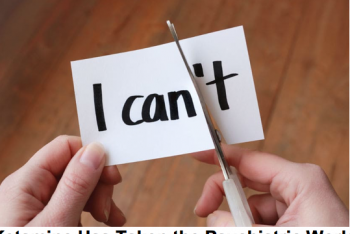CommentsCOVID WATCH - There is movement again at Vanessa’s Positive Energy, a dance and fitness studio near the busy corner of Normandie and Manchester in South Los Angeles.
But things still aren’t how they used to be. “We shut down in March of 2020,” says owner Vanessa Bailey, “and to some degree we are still shut down.”
Although patrons are returning to the green and white building, where a picture of Bailey welcomes them from a sign above the awning, capacity remains limited.
“The type of business I have mainly focuses on helping and providing activities, health and ways to function as a senior,” Bailey says. “Aside from those with preexisting conditions, we are at risk.”
Being in one of L.A.’s COVID hot spots has impacted Bailey in multiple ways. Between losing members of her South L.A. community and watching the bills pile up while struggling to access financial assistance, she wonders, “How do you survive when there is no income but you still have to pay?”
In Los Angeles County, COVID has played out very differently along lines of race and class. A RACE COUNTS report, an initiative of Advancement Project California, analyzed Los Angeles Times data and found that impoverished communities had case rates almost three times higher than affluent ones a year into the pandemic. In terms of race, areas with more than the median number of Black and Latino residents experienced above average infection rates, while neighborhoods with larger white populations continued to see below average rates.
“You can’t separate economic outcomes from health outcomes from educational outcomes.”
~ Matt Trujillo, Advancement Project California
In early 2021, Los Angeles County launched its COVID-19 Community Equity Fund to address the disparity by ramping up outreach in “hard-to-reach and historically underserved communities.” Instead of allocating resources to county programs, the fund grants money, training and other forms of assistance to community based organizations already serving the region’s most vulnerable. The L.A. County Department of Public Health, which is spearheading the initiative alongside the county’s Department of Health Services, reports that the grantee organizations “continue to exceed their program goals,” helping DPH reach nearly 1.9 million people through in-person and online events, in addition to providing vaccination clinics, PPE and information. While acknowledging the program’s gains, however, grantees and others on the front lines of relief efforts warn that solving deep inequities requires grappling with decades of underinvestment that have left Black and Latino communities less equipped to withstand the economic fallout of COVID-19 and slow its spread.
“You can’t separate economic outcomes from health outcomes from educational outcomes,” says Matt Trujillo, senior manager of strategic initiatives at Advancement Project California.
Maria Brenes, who has been involved in community organizing in hard-hit East Los Angeles for close to two decades, agrees. The issues there are “not siloed,” she says, but “all-encompassing.” As executive director of the Boyle Heights organization InnerCity Struggle, Brenes has been channeling resources from the Community Equity Fund into getting her community vaccinated and connected to social services. “The majority of Eastside residents…were not able to have the Zoom life and work from home. They had to go to workplaces that did not protect their health and safety,” she says.
Despite the elevated risk of infection, it can be hard for low wage workers to get vaccinated. According to Liz Schwandt, an early childhood education professional who co-founded the organization Get Out the Shot: Los Angeles to help marginalized Angelenos access vaccines, “It was almost impossible to schedule appointments for people who work multiple jobs, don’t have paid time off or were afraid of having to take additional time off because of a reaction to the vaccine.”
By March 1 of this year, when the vaccination rate in L.A. County for whites was at 23.7%, only 10.3% of Latinos and 12.7% of African Americans had received one or more doses.
For others, like Graciela Rodriguez, “There was no work” once the pandemic hit. When she lost both of her jobs providing in-home infant care and preparing desserts for events, the City of Commerce resident needed help applying for rental assistance. After reaching out to several agencies unsuccessfully, she finally found help at InnerCity Struggle. “I would not have been able to do it by myself,” she said in a Spanish email interview.
The arrival of vaccines signaled a turning point in the pandemic. Yet an uneven distribution had consequences for areas like South L.A. and East L.A.
“I think there were morbidity and mortality outcomes directly related to having the rollout tilt so heavily toward affluent people with laptops and time who were also already the most protected from COVID,” says Schwandt. “Once we did have places open for us,” Bailey says, “people from outside the community were coming in and taking our spots.”
By March 1 of this year, when the vaccination rate for whites was at 23.7%, only 10.3% of Latino residents and 12.7% of African Americans had received one or more doses. The Latino vaccination rate still trails almost 10% behind the number for whites, and the gap between white and Black residents remains even wider.
A digital divide could explain some of the disparity. When COVID first hit, information about testing “completely overlooked our South L.A. community,” says Bailey. “A lot of info goes out electronically, but our community is lacking in resources with getting on the internet.”
Other factors are harder to quantify, but just as significant. “If you really think back to the past with Black and brown communities, there’s a distrust,” explained Renett Clough, who works for the South L.A. Community Equity Fund grantee Brotherhood Crusade. While some African Americans are wary of the medical field’s history of anti-Black racism, she says, undocumented individuals might seek to avoid giving personal information to the government — even if that means going unvaccinated.
“The pandemic has exposed the fact that the way we deliver public services, particularly to communities of color and to low income communities, hasn’t worked.”
~ Chris Hoene, California Budget and Policy Center
But because “many of the organizations that have been funded through the Equity Fund have existing relationships with residents in the hardest hit communities,” Trujillo say, they can reach people whom public agencies can’t.
“You have to meet people where they are,” says Clough, who adds that making progress means being available to answer individual questions. Schwandt agrees, but points out that because time-intensive approaches don’t “fit the parameters of how health care is efficiently and quickly delivered,” marginalized communities receive too few resources.
“The inequity when COVID hit became apparent immediately,” says Corey Matthews, chief operating officer at Community Coalition, a South L.A. organization supported by the Community Equity Fund. “We could have started earlier in trying to correct the imbalance.” When the initiative finally launched nine months into the pandemic, “rigid and very troublesome” county requirements for contracting with grantees further delayed funding, according to a report from DPH and DHS to the Los Angeles County Board of Supervisors.
However, the Equity Fund’s successes have since shown “how community-based organizations are able to stand in the gaps for the public sector,” says Matthews.
As a tool for addressing inequity, this kind of partnership shows promise. Still, Chris Hoene, executive director of the California Budget and Policy Center, says more fundamental changes are needed.
“The pandemic has exposed the fact that the way we deliver public services, particularly to communities of color and to low income communities, hasn’t worked,” he says. Hoene believes our “eligibility based model,” which splits services across different agencies and levels of government, is too concerned with making people prove over and over that they qualify.
“What we need instead is an actual culture of service,” he says. Rather than “worrying about error rates and people receiving benefits who shouldn’t,” we should “focus on getting the benefits that people are eligible for into their hands.”
(Joe Rihn is a freelance writer and journalist from Los Angeles who covers politics, music, arts and culture for Capital & Main.)
























